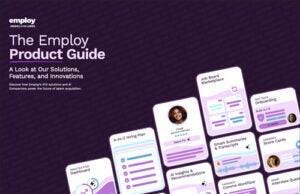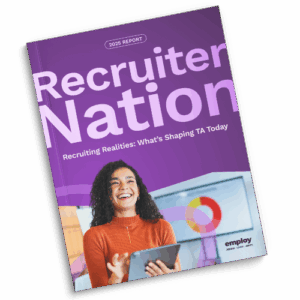In the fast-paced world of high-growth companies, candidate sourcing is an art form that requires strategy and finesse. We’ve gathered insights from CEOs, HR professionals, and other key industry players to share their most effective methods. From showcasing staff growth to leveraging the FTC’s non-compete law changes, explore the eighteen diverse strategies these experts use to attract top talent.
- Showcase and Nurture Staff Growth
- Offer Competitive Salaries Upfront
- Engage Personally at Networking Events
- Connect Through Shared Alumni Networks
- Incorporate Personalized Outreach and Engagement
- Collaborate with Industry Influencers
- Invest in Candidate Search Tools
- Maintain Relationships Through Talent Mapping
- Engage in Niche Online Communities
- Utilize LinkedIn’s Advanced Search
- Craft Thought-Provoking Outreach Subjects
- Utilize PR to Elevate Company Leaders
- Offer Clear Financial Advantages
- Leverage Existing Recruitment Database
- Assess Candidate Fit for Passive Roles
- Define Ideal Customer Profiles for Outreach
- Target Candidates Ready for Promotion
- Highlight FTC’s Non-Compete Law Changes
Showcase and Nurture Staff Growth

Focus on your brand and the value you provide for your staff. If you want to passively attract talent, then you need to show how you truly nurture your staff and allow them to grow both professionally and personally.
It’s not enough to just say that these processes are in place either; you need to show it consistently!
Wendy Makinson, HR Manager, Joloda Hydraroll
Offer Competitive Salaries Upfront

Sourcing passive candidates in high-growth companies is all about putting your best foot forward. Methods that include cat-and-mouse games or long negotiations won’t work, so set aside tricks and tests, and instead, get right to the point.
Offering competitive salaries and benefits is key to landing those already happily employed, so think twice before sending an offer.
Can it be upped? As a recruiter, I regularly see companies make the mistake of letting hindsight clear their vision.
Once the candidate walks away, they suddenly realize they were worth an additional ten, twenty, or even fifty thousand dollars. But it’s too late.
Think ahead about the number at which you’d be willing to lose this talent, and use it in your initial reach-out. It’s a bold and confident move that usually attracts the interest of even the most coveted candidates. If they don’t respond, you’ll know you tried your best and gave it everything you have. And if they do say yes, don’t dillydally. Be ready to move with a contract right away. These deals tend to happen quickly.
Rob Reeves, CEO and President, Redfish Technology
Engage Personally at Networking Events

In terms of strategies with the highest chance of success, my favorite way to source passive candidates is through one-on-one engagement, ideally at industry or networking events so that we can speak face-to-face. However, messages through platforms like LinkedIn can also be effective.
I start this conversation by asking about them—what they like about their current role, what they don’t, and where they see themselves going in the future. This gives me a foundation in what specific things they’re looking for and whether I have any open positions that can provide that. That is the only consistently effective way to catch the interest of passive candidates, in my experience—you need to give them a reason to consider a new role, despite the fact that they are satisfied enough with their current position that they’re not actively looking. To entice them away from it, you need to offer something that has real, tangible value for them, or directly solves a problem they’re facing in their current workplace. Throughout your engagement with them, keep the focus on their needs and goals, and don’t try to send along positions that aren’t aligned with them.
Passive candidates are not going to settle, and sending them opportunities that aren’t a good fit is likely to make them less responsive to future messages.
Rob Boyle, Marketing Operations Director, Airswift
Connect Through Shared Alumni Networks

Using alumni networks from universities and past employers can be very effective. I join alumni groups and get involved in discussions to find potential candidates. By reaching out and mentioning our shared background, I create a connection that often leads to talking about job opportunities at our company.
This shared experience helps build trust and makes people more open to considering new opportunities. Plus, alumni networks often have job boards and events that are great for finding passive candidates.
Matias Rodsevich, Founder & CEO, PRLab
Incorporate Personalized Outreach and Engagement

I think of it as three levels. The basics, which most people are doing, is to personalize your outreach message. This means going beyond just their name and job title—point out some commonality or unique aspect of their profile that shows you’ve spent time understanding their background. For example, mention a project they worked on or a shared interest in a specific industry trend.
Level two is about adding a personal touch with personalized voice memos and videos. Sending a voice memo or a short video makes your outreach stand out and feels more genuine. This can be incredibly effective in creating a connection. Additionally, multiple outreach attempts and touchpoints across different platforms can help keep you on their radar.
Level three takes it a step further by incorporating in-person engagement. Attend networking events where people from the target company might be present. Engaging with them directly at these events, talking about their interests, and connecting on a personal level can make a significant impact. After the event, follow up with a personalized message referencing your conversation, and try to schedule a call. This method shows your commitment and genuine interest, which can be very appealing to passive candidates.
Vivian Chen, Founder & CEO, Rise
Collaborate with Industry Influencers

Engaging with industry influencers is an effective method for sourcing passive candidates. I build relationships with key influencers who have a large following and are respected in our industry.
By collaborating with them on content such as webinars, podcasts, and articles, we can indirectly reach potential candidates who trust and follow these influencers. After the content is published, I follow up with individuals who engage with it and express interest. This strategy not only enhances our brand visibility but also leverages the influencer’s credibility to attract top talent.
Engaging through a trusted intermediary makes it easier to establish connections with passive candidates. This approach also positions our company as a thought leader in the industry, which is attractive to high-caliber professionals.
Shawn Plummer, CEO, The Annuity Expert
Invest in Candidate Search Tools

If you have a great job opening, most people will be open to talking to you. No matter how satisfied a person is with their current job, they are always looking for a better offer. Employees who work in the same place their entire lives are rare.
Much of the market is passive. If you only consider those who are actively looking for work, you’re missing out on a huge opportunity. Anyone can be a potential candidate for your job opening.
The key to finding passive job seekers is to get their attention. And since passive candidates are not currently looking for new offers, you need to take the initiative yourself.
My great tip is to invest in tools that allow you to search for and connect with potential clients. Job-search platforms and LinkedIn have databases of tons of people you can connect with. You have to pay extra for these tools, but they give you access to a huge number of passive candidates.
You must be able to offer your candidate something mutually beneficial. If you can’t honestly offer them more than they have now, then you’ve chosen the wrong passive candidate. But don’t focus solely on money. While money is an important part of the decision-making process for anyone, it is not everything. Offer them work-life balance, company benefits, or anything else that will make your proposition stand out in the crowd.
Also, please forget about generalized mailings. Start personalizing your messages instead. People can see when a message is personalized and when it is sent using a generic template. Sure, it takes longer to personalize each message. But this way, you can engage in a dialogue with those candidates who are hard to reach with a faceless template email.
And the most important: always try to expand your social circle and audience, and don’t forget the people you’ve collaborated with before. They can be the best solution for recommending potential candidates.
Susan Andrews, HR Consultant, KIS Finance
Maintain Relationships Through Talent Mapping

Talent mapping stands out as an incredibly effective method for sourcing passive candidates, especially in high-growth settings. This approach involves identifying key industry players who possess the skills and experience your company needs. It essentially creates a snapshot of potential future hires, giving you a proactive edge in talent acquisition.
Once you have your talent map, engage these prospects by maintaining an ongoing relationship. Keep a database of these high-potential candidates and touch base periodically with updates about your company’s achievements and new opportunities. Tailor your communication to highlight how their unique skills align with your current and future needs. This way, when a relevant position opens up, they already feel a connection to your company and see how they could fit in seamlessly.
Will Yang, Head of Growth & Marketing, Instrumentl
Engage in Niche Online Communities

As the founder of one of the largest four-day workweek recruitment platforms in the UK, I discovered that leveraging niche online communities is highly effective for sourcing passive candidates. Engaging with these communities allows access to professionals who are passionate about their field but not actively seeking new opportunities.
In order to attract their interest, I participate in discussions, share valuable insights, and offer help without pushing job offers. Building trust and positioning myself as a knowledgeable resource is key. When the time is right, I introduce opportunities that align with their interests and career goals.
Plus, this strategy surprisingly uncovers hidden talent and fosters genuine connections. Candidates appreciate a personalized approach and are more likely to consider new roles when they feel understood and valued. This strategy has proven successful in attracting top talent for high-growth companies.
Phil McParlane, Founder & CEO, 4DayWeekJobs
Utilize LinkedIn’s Advanced Search

Since 2005, I’ve specialized in recruiting for fast-paced tech companies, focusing on connecting with passive candidates who aren’t actively seeking new opportunities but are often the most talented and valuable prospects.
In high-growth companies, finding and engaging passive candidates is a challenge. One effective approach I use is leveraging LinkedIn’s advanced search and Boolean strings. This method allows recruiters to filter through LinkedIn’s vast network to find candidates with specific skills and experiences, essential for niche roles or emerging technologies.
LinkedIn profiles offer detailed insights into a candidate’s work history, achievements, skills, and endorsements, providing a comprehensive view that helps assess their fit beyond keywords. The platform also enables direct communication through personalized messages tailored to resonate with their interests and career goals.
Once I identify a promising candidate, the next step is crucial — engaging them effectively.
Here’s my strategy:
Personalized Outreach: I thoroughly review the candidate’s profile to understand their career journey, recent projects, and professional interests. I craft a personalized message highlighting specific aspects of their profile and how they align with opportunities at Mixmax. This includes references to their skills, experiences, or recent LinkedIn activities. I articulate why the role and Mixmax are compelling, focusing on our innovative technology, growth trajectory, and dynamic culture.
Showcasing Culture and Growth: I share engaging content like videos, blog posts, and articles that showcase our culture, team experiences, and success stories, giving candidates a vivid sense of life at Mixmax. I include testimonials from recent joiners to highlight their positive experiences and the impact they’ve made.
If a candidate shows interest, I quickly follow up with more details and arrange a conversation at their convenience. For non-responsive candidates, I send a gentle reminder, reiterating my interest and offering more context on why the opportunity could be a great fit.
By using LinkedIn’s advanced search tools and engaging with personalized, value-driven communication, we can successfully attract top-tier talent to high-growth roles. At Mixmax, these strategies have been key in building a team that thrives in a fast-paced, innovative environment.
Margaret Buj, Interview Coach and Sr. Talent Acquisition Partner, Mixmax
Craft Thought-Provoking Outreach Subjects

Writing compelling subject lines during cold outreach is super effective. Using their first name and posing a thought-provoking question, such as “Hi Josh, are you happy at [company]?”, immediately captures their attention. I’m also a big believer in personalized messages.
By highlighting specific details from their LinkedIn profile or aligning the message with their experience, I establish rapport right away. Personalization differentiates me from other recruiters and has boosted my response rates to nearly 50%.
Josh Fullmer, Sr Technical Recruiter, Dragos, Inc.
Utilize PR to Elevate Company Leaders

It’s actually been quite effective to get creative with PR opportunities for our leaders as a method for improving candidate sourcing. PR shouldn’t be limited to just promoting our product or service; it can also play a crucial role in elevating the profile of our company leaders. This is a key aspect of recruitment marketing that can often be overlooked.
There are many leadership and business publications, media platforms, and podcasts constantly searching for knowledgeable guests. Sometimes, we might even secure a spot on a webinar series or a panel for a similar business in our industry, provided they’re not a competitor.
Having our leaders’ faces out there not only boosts our business but also enhances our employer profile. Both passive and active candidates can start to associate a face and personality with our company, which helps them align their own values and career goals with ours.
Rosana Tejada Crespo, CEO, Tejada Solicitors Law Firm
Offer Clear Financial Advantages

Keep your finger on the pulse of that company’s average salary ranges and bonus structures, then simply make a better offer.
Passive candidates tend to be the kinds of people who are earning decent money and don’t have any major work complaints—but they’re not raving about their company either. Offering a jump in pay is really all it takes to pique their interest here. Especially because there’s no emotionality or relational issues you have to overcome to make the jump worth their while. It’s really just about making the move a clear, sensible financial decision.
Mark Pierce, CEO, Wyoming Trust & LLC Attorney
Leverage Existing Recruitment Database

Personally, I’ve found the most effective method for sourcing passive candidates, based on my experience, is to fully utilize your existing talent pool. When you’re in recruitment, whether in-house or at an agency, you likely have access to a recruitment database filled with thousands of candidate profiles. Many of these individuals are currently employed but might be perfect for a role you need to fill.
One major advantage of tapping into your recruitment database is that you might already have established relationships with these candidates, giving you an edge over other recruiters who are reaching out for the first time.
For instance, at our company, we’ve incorporated AI-powered search tools into our recruitment process. This technology allows us to efficiently search for candidates by skills and experience, bringing the most qualified individuals to the forefront. We also utilize candidate engagement platforms to automatically present new opportunities to qualified passive candidates, ensuring they are always aware of fresh opportunities.
Paw Vej, Chief Operating Officer, Financer.com
Assess Candidate Fit for Passive Roles

As a successful business owner, I tend to avoid passive behaviors, especially in management positions. Even though I run a multi-million-dollar company, I still thoroughly vet new upper-level hires. When I notice someone who is too passive, I know that supervisory positions may not be a good fit because they can be easily bullied and manipulated by more aggressive employees whom they supervise.
Yet, on the other hand, there are some positions in which a passive person is an asset, like customer service. They are nice and convey things to customers in a very nice manner and tone. I engage them by being upfront and honest and letting them know their personality would be an asset to our company.
Tammy Sons, Founder/CEO, TN Nursery
Define Ideal Customer Profiles for Outreach

One of the most effective methods for sourcing passive candidates in high-growth companies is leveraging Clay.
First, define your ideal customer profile (ICP). Use data from your ICP to create three buckets that you will use to build an outbound campaign for.
A bucket can be any combination of size type, skillset type, and/or signal.
Below is an example of what one bucket could look like:
Size Type: 50-100 employees, 10-20 marketing department size, UK, finance
Skillset Type: Director, VP Marketing
Signals: Using Marketo, hiring marketing
Create relevant messaging – this is key.
For sourcing tech, you’ll use a mix of Clay and Apollo, and maybe an alternative email finder like Wiza, Prospeo, SalesQL, etc.
Build your buckets, optimize messaging, and use tech to get in front of your high performers.
Travis Lindemoen, Founder, Enjoy Mondays
Target Candidates Ready for Promotion

The key to getting passive candidates on board almost always involves making them a better offer than their current arrangement. Passive candidates tend to be content in their current role but will be willing to move for the right offer. The challenge here is getting them to open up about just what they’re looking for in terms of salary, benefits, and responsibilities.
I find that going after candidates who seem ready for a promotion works best; one of the key metrics I’ll look at is how long a candidate has been in their current position. If they’ve been there for five years or more, they tend to be much more interested in moving up.
Nick Valentino, VP of Market Operations, Bellhop
Highlight FTC’s Non-Compete Law Changes

Right now, I think a lot of recruiters are going to have an easier time persuading these candidates by reassuring them about the FTC’s change to non-compete laws.
Just this past April, the FTC announced what is essentially a green flag for most employees that says if they change jobs, they can indeed go and work for competitors. This change is a massive win for workers’ rights. It directly states that the vast majority of existing non-compete clauses in employee contracts are null and void, and that outside a handful of C-suite roles, an employer cannot enforce or seek legal ramifications against someone who seeks greener pastures with a previous industry competitor. Make that reassurance clear, and you’ll see a lot more movement.
Jonathan Feniak, General Counsel, LLC Attorney

















